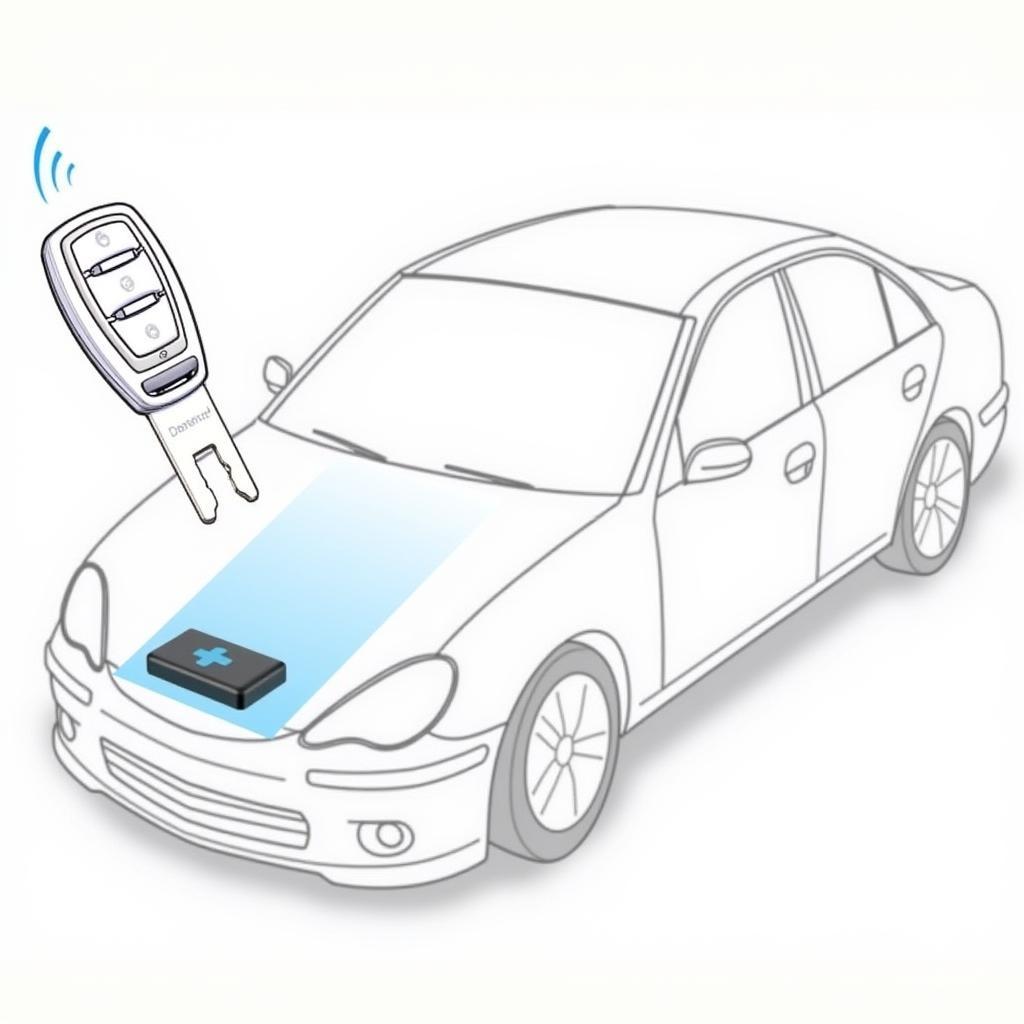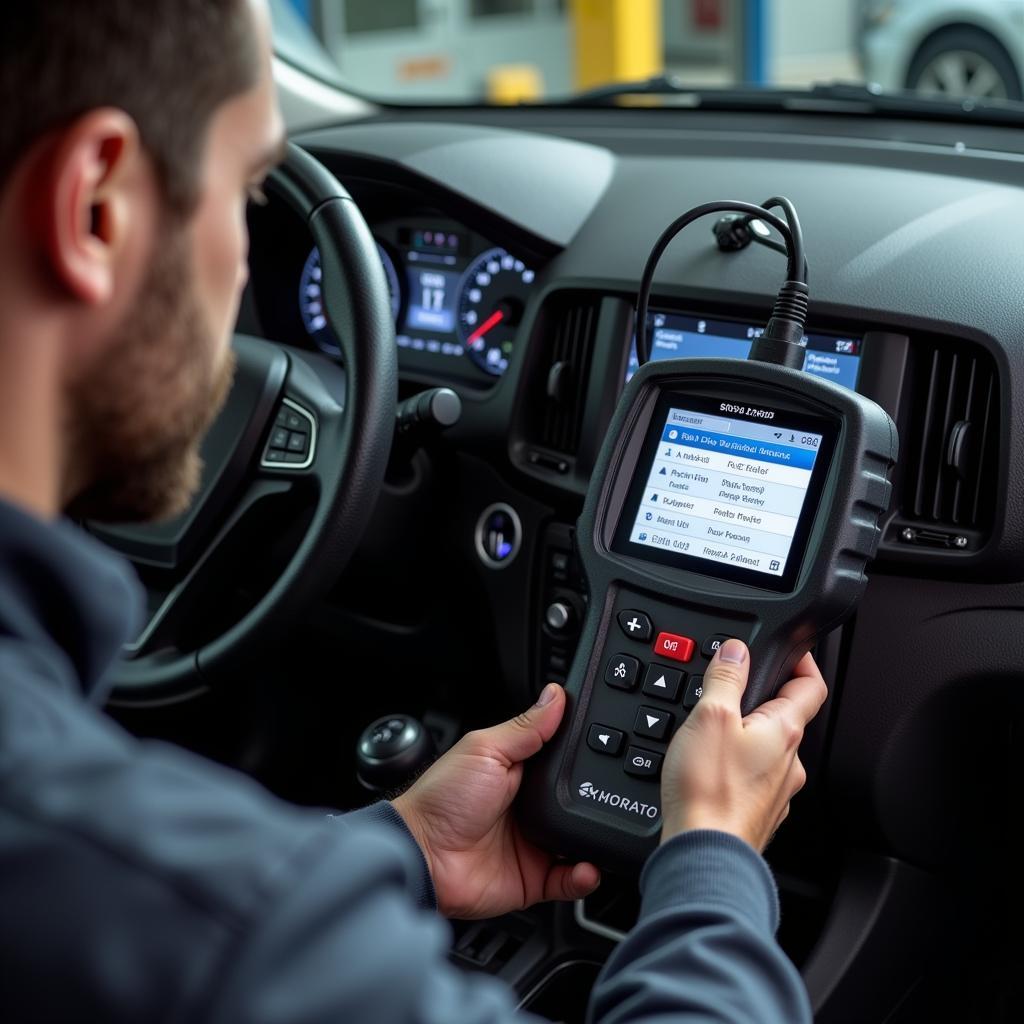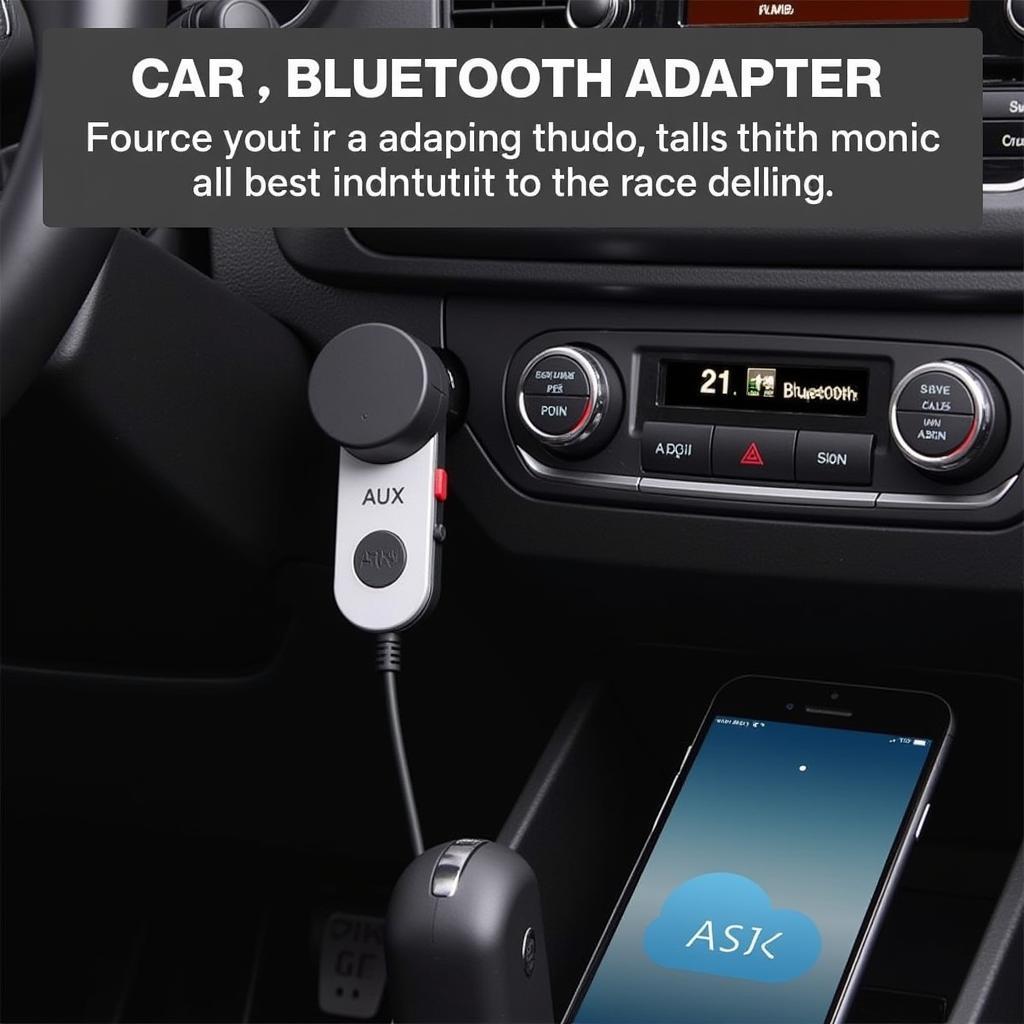A passive device anti-theft system is a security feature in many modern vehicles that automatically engages without any action from the driver. Unlike active systems that require key fobs or manual activation, passive systems work behind the scenes to deter theft. These systems offer a seamless and convenient way to protect your vehicle. Let’s delve into how they work and why they’re so important.
 Diagram of a Passive Anti-theft System in a Car
Diagram of a Passive Anti-theft System in a Car
Passive anti-theft systems primarily rely on transponder technology. A small transponder chip is embedded within your car key. This chip emits a unique radio frequency signal. When you insert the key into the ignition or bring it near the vehicle (for push-to-start systems), a receiver in the car detects the signal. If the signal matches the pre-programmed code in the vehicle’s computer, the engine is allowed to start. Without the correct signal, the engine’s ignition system or fuel pump is disabled, preventing theft.
How Does a Passive Anti-Theft System Work?
The core component of a passive anti-theft system is the immobilizer. This electronic control unit prevents the engine from starting unless it receives the correct signal from the transponder chip in the key. Think of it as a digital handshake between your key and your car.
Understanding the Key Components of a Passive Anti-theft System
Here’s a breakdown of the key components:
- Transponder Chip: Located inside your car key, this chip transmits a unique RF signal.
- Receiver: Installed near the ignition switch or steering column, the receiver detects the signal from the key.
- Immobilizer: This control unit compares the received signal with stored codes. If they match, the engine is allowed to start.
- Engine Control Unit (ECU): The immobilizer communicates with the ECU to control the engine’s vital functions, such as fuel delivery and ignition.
Benefits of Passive Anti-Theft Devices
Passive anti-theft devices offer numerous advantages:
- Convenience: They operate automatically, requiring no extra effort from the driver.
- Increased Security: They make it significantly more difficult for thieves to steal your vehicle.
- Lower Insurance Premiums: Many insurance companies offer discounts for vehicles equipped with anti-theft systems.
- Peace of Mind: Knowing your vehicle is protected provides added security.
 Close-up of Car Key with Transponder Chip
Close-up of Car Key with Transponder Chip
Common Problems with Passive Anti-Theft Systems
While generally reliable, passive anti-theft systems can occasionally malfunction. Common issues include:
- Weak Key Fob Battery: A low battery can weaken the transponder’s signal, preventing the car from starting.
- Faulty Receiver: A malfunctioning receiver may not be able to detect the key’s signal.
- Immobilizer Issues: Problems with the immobilizer itself can prevent the engine from starting.
- Key Programming Errors: If the key is not programmed correctly, the system won’t recognize it.
If you experience problems with your passive anti-theft system, professional diagnostics are often required. In some cases, remote software programming and installation might be necessary for repairs. This could involve reprogramming keys or updating the immobilizer software. For instance, if you’re having trouble connecting your phone via Bluetooth, resources like connecting bluetooth phone to car radio or connecting bluetooth to car radio might be helpful.
 Mechanic Diagnosing a Car's Anti-theft System
Mechanic Diagnosing a Car's Anti-theft System
Conclusion
A passive device anti-theft system provides an invisible layer of security for your vehicle. By understanding how these systems work, you can better appreciate their importance and troubleshoot potential issues. While they offer significant protection, remember that no system is foolproof. Combining a passive system with other security measures can provide even greater peace of mind. For those interested in improving their car audio experience, check out articles on bluetooth car radio interface or perhaps find some best bluetooth car radios for under 80. And if you lack Bluetooth in your car, you can always look into fm transmitter app for phone to car radio without bluetooth.


